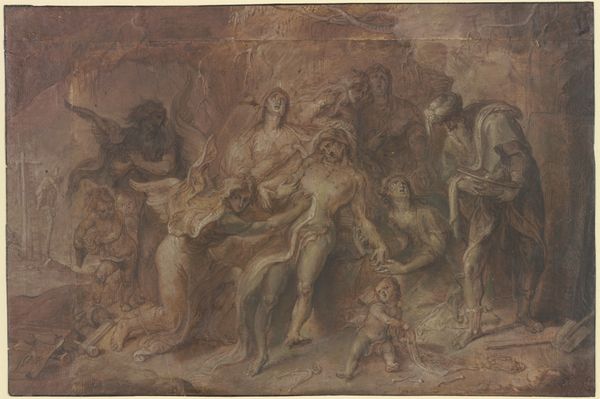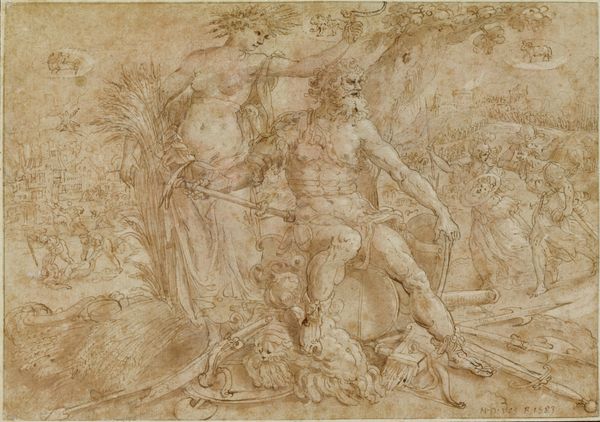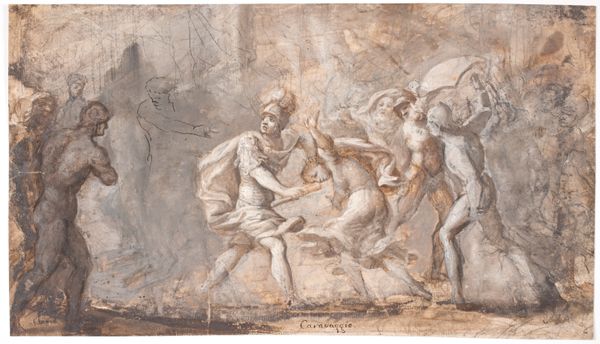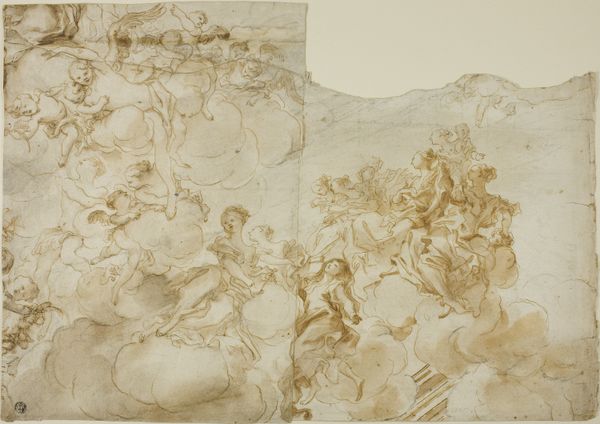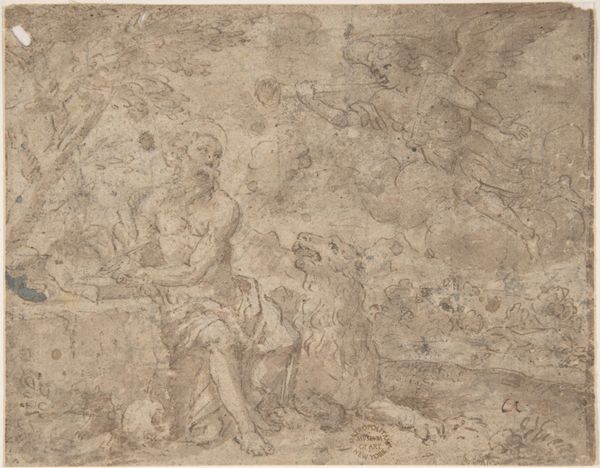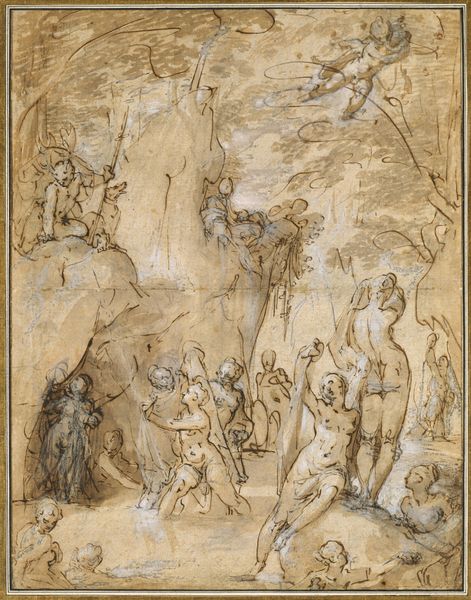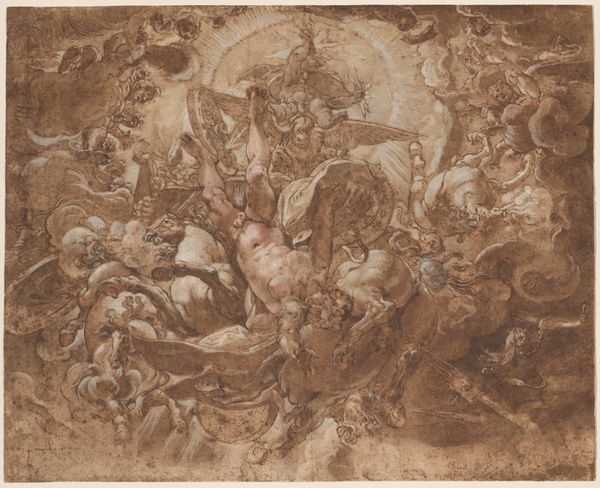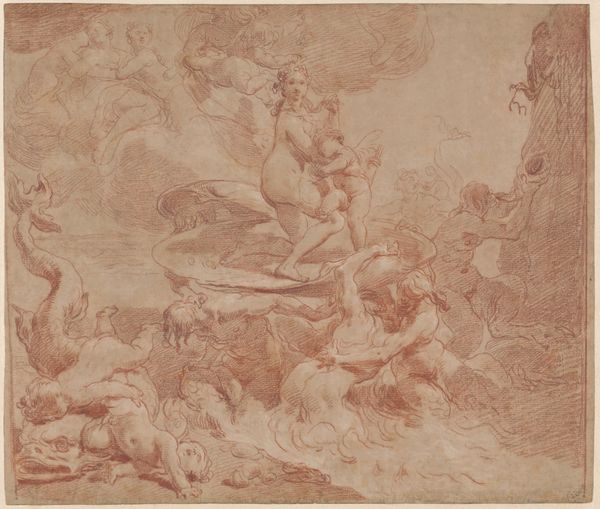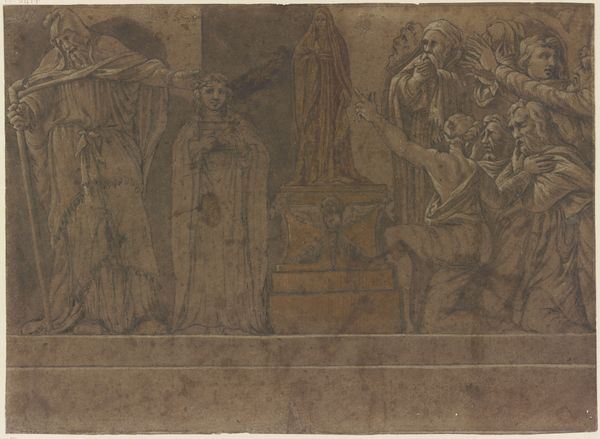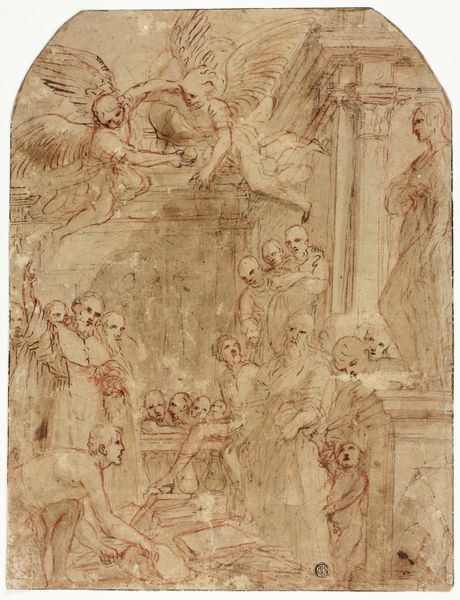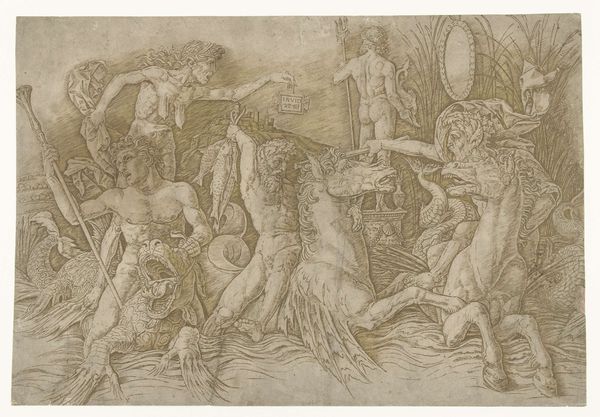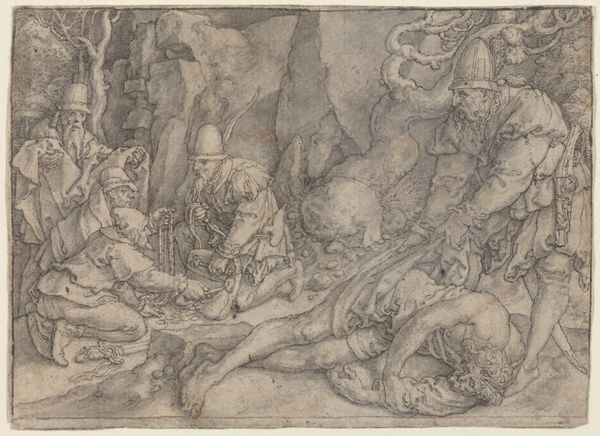
drawing, paper, ink
#
drawing
#
mannerism
#
figuration
#
paper
#
oil painting
#
ink
#
history-painting
Dimensions: overall: 61.5 x 62.8 cm (24 3/16 x 24 3/4 in.)
Copyright: National Gallery of Art: CC0 1.0
Editor: This drawing, "The Daughters of the Po with River Gods" created around 1591 by Joseph Heintz the Elder, is executed in ink on paper. There's a swirling, almost chaotic energy to it, a sense of figures emerging from a watery world. What strikes you most when you look at it? Curator: The swirling energy you mention is so characteristic of Mannerism, but it's important to consider what that stylistic choice conveys within the broader cultural context. This is the late 16th century, a period of intense social and political upheaval. Do you see how the figures are rendered? Editor: Yes, there's an idealization of the human form, but also a certain... theatricality? Almost performative. Curator: Precisely! And what does that performance tell us about the expectations placed upon women, and upon the very representation of "femininity" in this era? The daughters of the Po River are, in a sense, embodying a civic ideal, but are they empowered agents or idealized symbols used to reinforce social structures? Think about how rivers are often feminized and reflect the gendered associations with nature and the land. Editor: So, beyond the mythological narrative, Heintz is subtly commenting on gender roles and societal expectations through the representation of these figures? Curator: Exactly. Consider the male figures of river gods, notice where they are placed within the space, and what type of power is visually imbued in them compared to that of the women. Does this reinforce patriarchal norms or subvert them? Where do you lean on the spectrum of that dialogue, and how is your perspective impacted as someone viewing it through our contemporary lens? Editor: I see what you mean. It is certainly prompting me to think deeper about how artistic representation, especially of women and natural forces, intersects with power dynamics. Thanks for broadening my understanding. Curator: And thank you for making visible aspects I did not have to name! It is refreshing to reflect on this as a continued conversation on these representations of gender and nature, even centuries later.
Comments
No comments
Be the first to comment and join the conversation on the ultimate creative platform.

